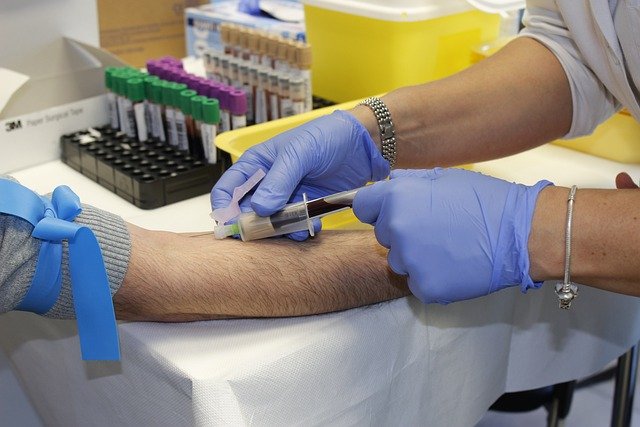Phlebotomy and Vitals in Kenya: Core Skills for Ambulatory Care Teams
Phlebotomy and vital signs are cornerstones of safe, efficient outpatient care in Kenya. From triage desks to sample collection points, these skills support accurate diagnosis, timely treatment decisions, and early escalation when someone is unwell. This overview maps core techniques, training paths, and quality safeguards for ambulatory teams working in clinics and hospitals.

Ambulatory care in Kenya depends on the reliable capture of vital signs and the safe collection of blood samples. In busy outpatient departments, triage stations and sample rooms are often the first touchpoints for patients. Well-executed measurements and phlebotomy reduce diagnostic delays, prevent errors, and help clinicians prioritise those who need urgent attention. Because different cadres contribute to these tasks, from nurses and clinical officers to laboratory personnel and support staff, shared standards and clear communication are essential across public and private facilities in your area.
Learn essential medical skills for ambulatory care
Vital signs provide a rapid snapshot of physiological stability. Accurate temperature, pulse, respiration rate, blood pressure, and oxygen saturation measurements depend on patient identification, appropriate cuff size, correct positioning, and a calm environment. Normal ranges vary with age, pregnancy, and underlying conditions, so results should be interpreted in context. Red flags such as a very high fever, hypotension, tachypnoea, or low oxygen saturation signal the need for prompt escalation. A brief pain score and focused history at triage can add useful detail to guide next steps.
Meticulous technique is only part of the picture. Clean and calibrated devices, consistent documentation in facility registers or electronic systems, and clear handovers reduce missed information. Infection prevention and control should run throughout: hand hygiene, single-use gloves when indicated, and proper cleaning of equipment that contacts skin. Where language barriers exist, using simple, respectful explanations builds trust and improves cooperation, particularly when preparing patients for blood collection.
Medical assistant programs explained in Kenya
The term medical assistant is not a formal licensed title in Kenya, but the competencies it implies are covered across recognised health training pathways. Foundational skills for phlebotomy and vital signs appear in certificate and diploma programmes such as nursing, clinical medicine, and medical laboratory science, as well as short courses focused on venepuncture, triage, infection prevention, and basic life support. When reviewing Medical Assistant Programs Explained content or prospectuses, confirm institutional accreditation, curriculum alignment with national guidelines, supervised clinical practice, and assessment methods. Attachments in outpatient clinics and laboratories help translate classroom learning into safe, real-world performance.
How to become a medical assistant in Kenya
If you are exploring How to Become a Medical Assistant skills pathway, start by matching your goal to an established cadre and scope of practice. Check entry requirements for approved programmes, such as secondary school subjects and minimum grades. Build core competencies in communication, patient identification, measurement technique, and specimen handling through structured courses and supervised rotations. Short upskilling modules can strengthen areas like triage, vital-signs interpretation, and venepuncture for those already working in local services. Maintain professional standards with ongoing mentorship, documented competencies, and participation in continuing professional development.
Safe phlebotomy follows a consistent workflow. Verify patient identity using at least two identifiers, explain the procedure, and assess for allergies or previous complications. Select an appropriate vein, apply a tourniquet briefly, cleanse the site, and use the correct order of draw for sample tubes to prevent additive carryover. Label tubes at the bedside with patient details and time of collection, then ensure timely transport to the laboratory under recommended conditions. Watch for complications such as vasovagal episodes or haematoma formation and manage them according to facility protocols. Used sharps and waste should be disposed of in puncture-proof containers and colour-coded bins.
In triage, quality hinges on consistency and context. Repeat abnormal measurements to confirm, consider situational factors such as recent exertion or anxiety, and document any interventions. For blood pressure, allow the patient to rest, position the arm at heart level, and avoid measurements over clothing. For oxygen saturation, check perfusion and remove nail polish if it impedes the sensor. Where paediatric or maternal services are offered, have age-appropriate cuffs and thermometers available, and apply growth charts or obstetric early warning tools to support timely decision-making.
Good record-keeping connects every step. Vital signs should appear in the patient card or electronic record with date and time, while laboratory request forms must include the clinical question, requested tests, and contact details for result follow-up. Turnaround times improve when forms are legible, barcoded systems are used where available, and staff maintain close coordination between sample rooms and laboratories. Regular audits of measurement accuracy, labelling errors, and sample rejection rates can identify training needs and process gaps.
This article is for informational purposes only and should not be considered medical advice. Please consult a qualified healthcare professional for personalized guidance and treatment.
Effective ambulatory care depends on small, repeatable actions done correctly every time. When teams in Kenya standardise vital-sign techniques, communicate clearly, and perform phlebotomy with attention to patient safety and specimen integrity, outpatient services run more smoothly and clinical decisions become more reliable. Investing in these core skills, and maintaining them through mentorship and practice, strengthens quality across clinics and hospitals and supports better outcomes for patients.




